It is common in China’s national parks to identify human and animal shapes in the scenery. In the Rainbow Mountains of Gansu, for instance, several of the colorful mounds are said to resemble kowtowing monks. Nearer to home, Guangdong’s Danxia Mountain park is renowned for its coyly named ‘male and female’ rocks – one supposedly looks like a circumcised penis, the other (a mere hole in the wall) a gaping vagina.
It seems to be de rigueur wherever you go: as you wend your way along a path, a plaque will appear authoritatively announcing that the large stone before you looks exactly like a mother and child huddling together, while the one over there is the spitting image of a panda.
“Do you see it?” your guide may ask, if you’ve chosen to hire one. “Tilt your head a bit, stand exactly on this spot.” If you squint, you may just be able to make out the pseudo-likeness. Nodding and smiling at the cicerone, you politely feign enthusiasm while secretly wishing you could just inhale the fresh air and marvel at the incredible vistas before you – without having to pick out the flimsiest resemblance between the petrified tree over there and a wombat.
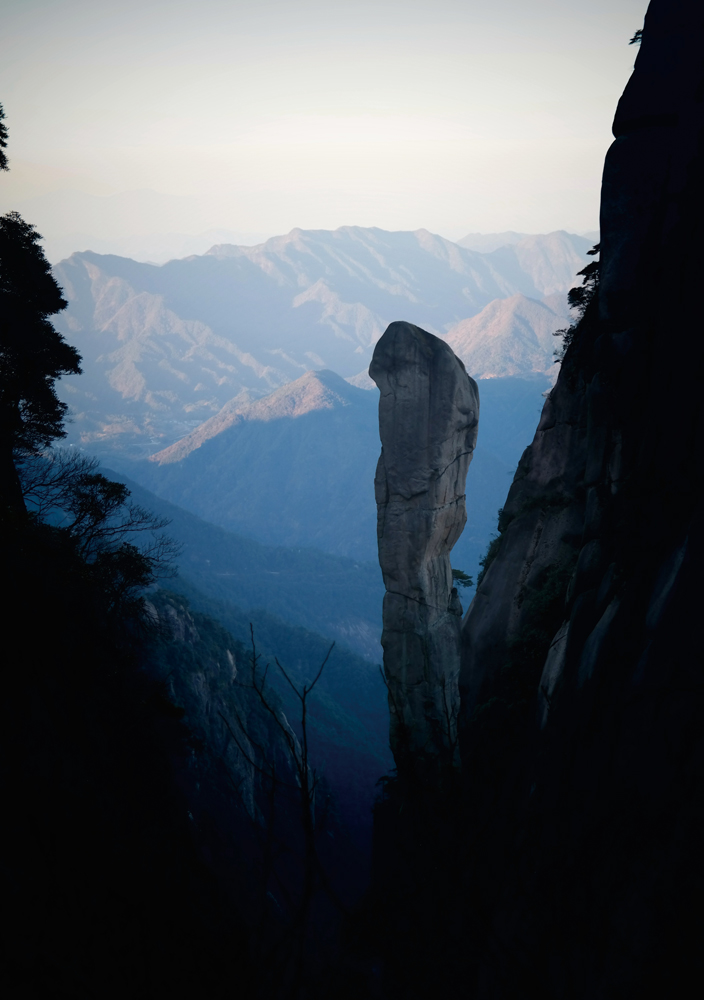
That was certainly how we felt on a recent trip to Sanqingshan in Jiangxi, a province with a remarkable array of natural wonders, from impressive mountain ranges to China’s largest freshwater lake. After 10 minutes of staring at a granite pillar attempting to see a snake, we decided to ignore the rest of the stone menagerie and instead focus on the gorgeous natural beauty that surrounded us on every side.
Mount Sanqing is named for the three pure ones, the holy trinity of Taoism. Some say that the trio of highest peaks represents the august deities themselves. Others describe them as thrones from which Yuanshi Tianzun, Lingbao Tianzun and Daode Tianzun look down upon the splendor of creation.
It’s a brilliantly clear day when we set foot upon the UNESCO World Heritage site. This is considered slightly bad luck, as in wetter weather the mountains become wreathed in an ethereal mist. Seeing enough ‘seas of cloud’ in the big city, however, it’s quite a relief to encounter azure skies and views of rolling hills that stretch for miles, eventually disappearing in a distant blue haze. The sun bathes the panorama in a crisp light, beaming off the foliage-covered landscape from which large rocky formations burst forth.
Paths have been set into the sides of the cliffs, jutting out with little apparent support. It’s exhilarating and slightly terrifying, the routes hovering over empty space; the ground hundreds of meters away. This does, however, mean views are completely unobstructed.
Sanqingshan’s environment is reminiscent of the more famous Huangshan. In fact, it is known by some as a second-class Huangshan: the total expanse is smaller; the highest summit is shorter (by around 50 meters); it has never inspired the same level of literary and artistic output.
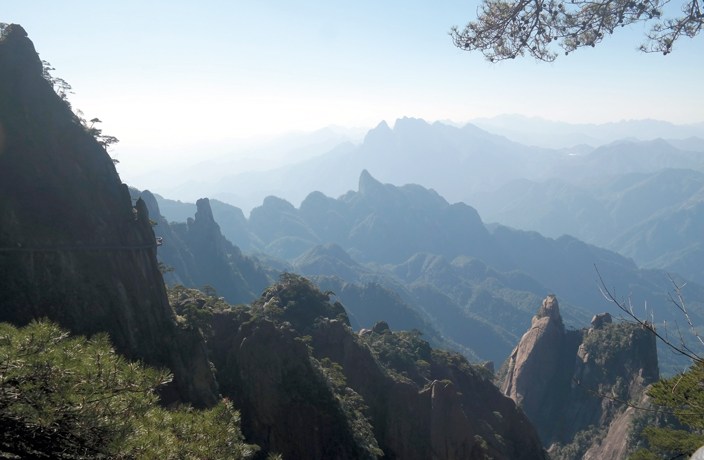
However, for these very reasons it also doesn’t draw the same size of horde, and there’s hardly any trash to be seen littering the slopes. Prices are also less steep than at Huangshan, though the toilet facilities leave a lot to be desired. For those that relish the obscurer option, you’ll get way more kudos for visiting lesser-known Sanqingshan.
There are three entrances to the national geopark, two of which have cable cars that shorten the journey up the mountain significantly. It is possible to scale all 1,819 meters to the pinnacle of the area, Yujing Peak, on foot, but the cable car is more expedient for those who want to ascend at a leisurely pace or make Sanqingshan a daytrip amidst other explorations of the region.
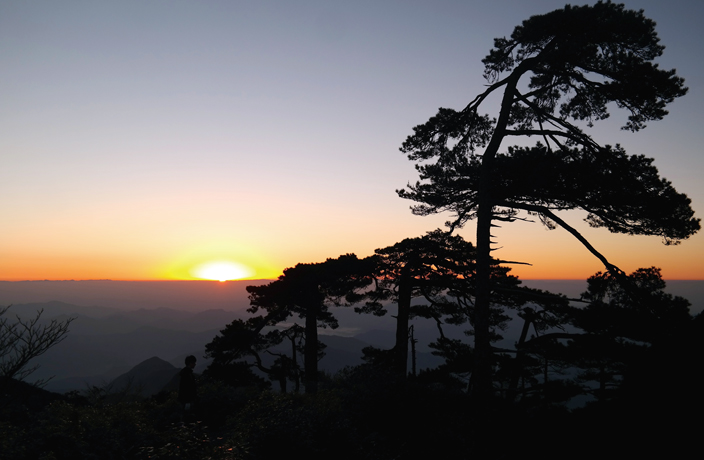
The third gateway to this verdant locale is where the UNESCO exhibition center for Sanqingshan is located. For the spry and adventurous, one can feasibly come down on this side, then take a 59-kilometer car ride onto Wuyuan, which is home to preserved villages that contain charming architecture from days of yore.
Sanqing itself also hosts a delightful example of ancient construction: the Sanqing Temple, topped by double eaves with wooden dougong. Unlike many of China’s monasteries and pagodas, this religious edifice doesn’t bear the same obvious marks of reconstruction. Originally built in AD 1170, it is a small – around 200 square meters – but remarkable building that looks weather beaten but defiant; its bricks bear the stamp of hundreds of years of survival against wind and snow but appear sturdy as ever.

According to Taoist theory, the temple is located at the spiritual convergence point of Mount Sanqing. At the front is a simple, solid stone incense burner, while nearby sits the tomb of the temple architect and a (supposedly) health-giving well, among other minor curiosities.
It is possible to stay all night on the mountain, but be forewarned that the accommodation is relatively pricey considering the simplicity of the rooms – though these are, mercifully, extremely well heated for winter travelers. 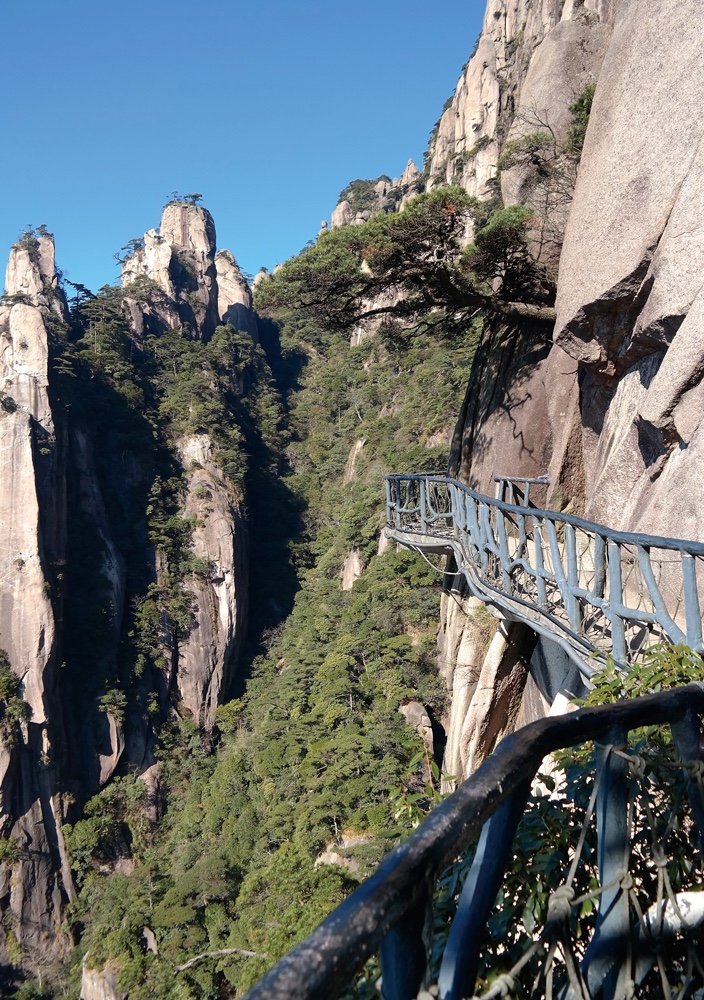
If you do elect to bed down on Sanqing, make sure to wake early enough to catch the sunrise. Huddling together with other travelers in the pre-dawn chill, there’s a kind of camaraderie between those who have forced themselves from the comfort of bed to make the 20-minute hike to the Jade Terrace.
Suddenly, a thin red line begins to simmer on the horizon, and gradually a fiery yellow orb begins to emerge. As it rises higher in the sky, it stretches forth rays of light, transforming the mountainsides from dark shadows into canvasses of burning orange and a striking red the color of Mars dust.
It’s hues like these, combined with the penetrating blues of the heavens and the fresh shades of the verdure, that make Sanqingshan well worth a trip. It may not be quite as grand in form as Huangshan, but it explodes with the joy of color.
How to get there:
Sanqingshan is just over an hour away from two small cities: Shangrao and Yushan. From Guangzhou it is possible to catch a fast train to both, with the railway trip taking between five-and-a-half and six hours (there is one daily train from Shenzhen, but this takes seven hours and 20 minutes). Yushan is slightly closer to Sanqingshan, but trains to Shangrao are much more frequent – and RMB14 cheaper at RMB579. One can take a local bus early in the morning from either city, though a taxi or car hire is more convenient. If you speak Chinese or have a friend who does, visit the official site for more information: sqs.gov.cn
Opening times: 8am-5pm during the week, 7.30am-5.30pm during the weekend
Entrance price: RMB150 (does not include cable car)






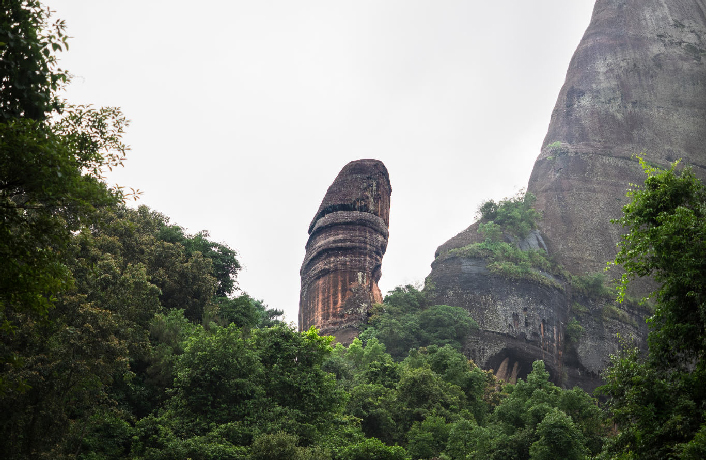
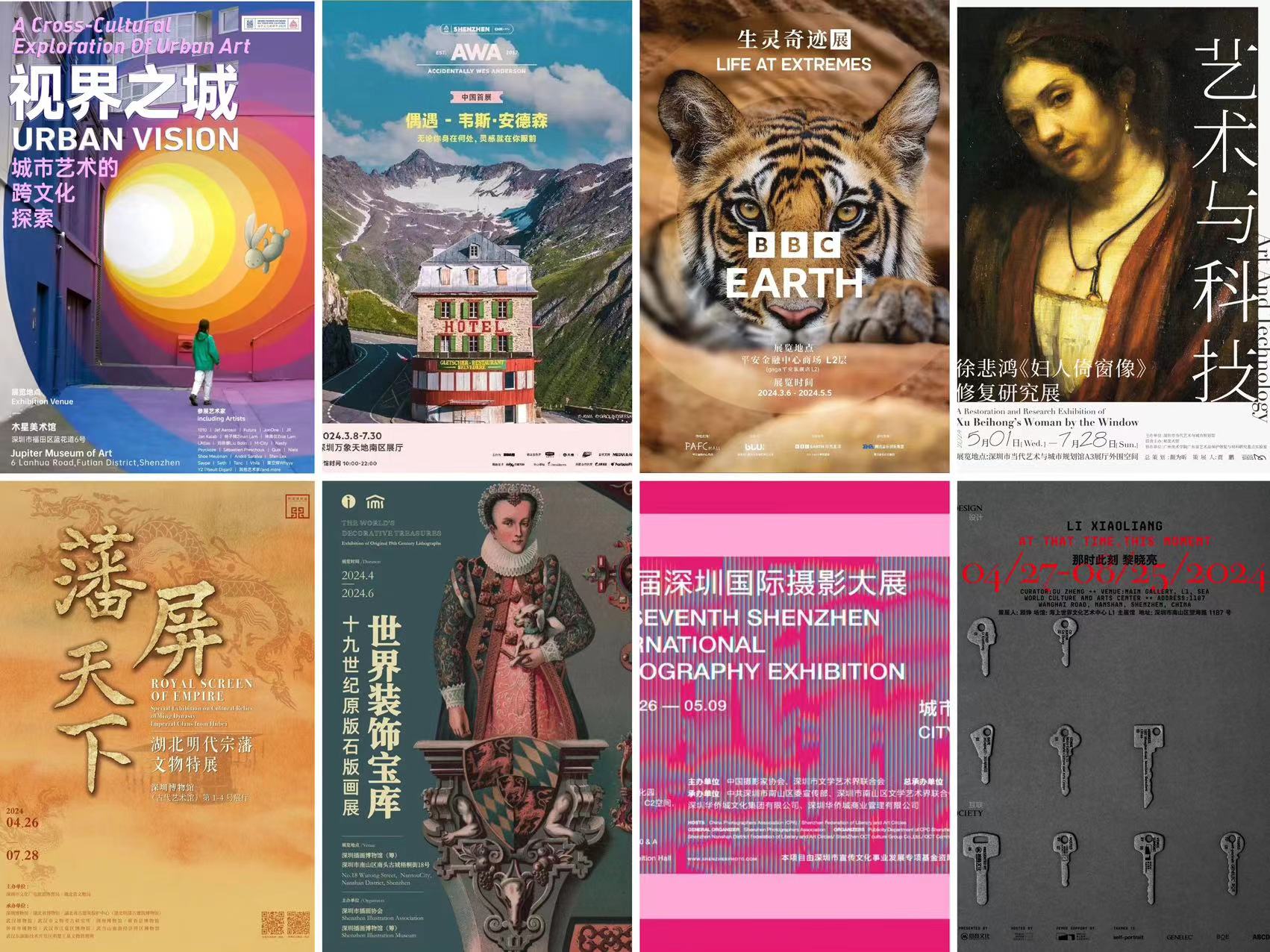














0 User Comments